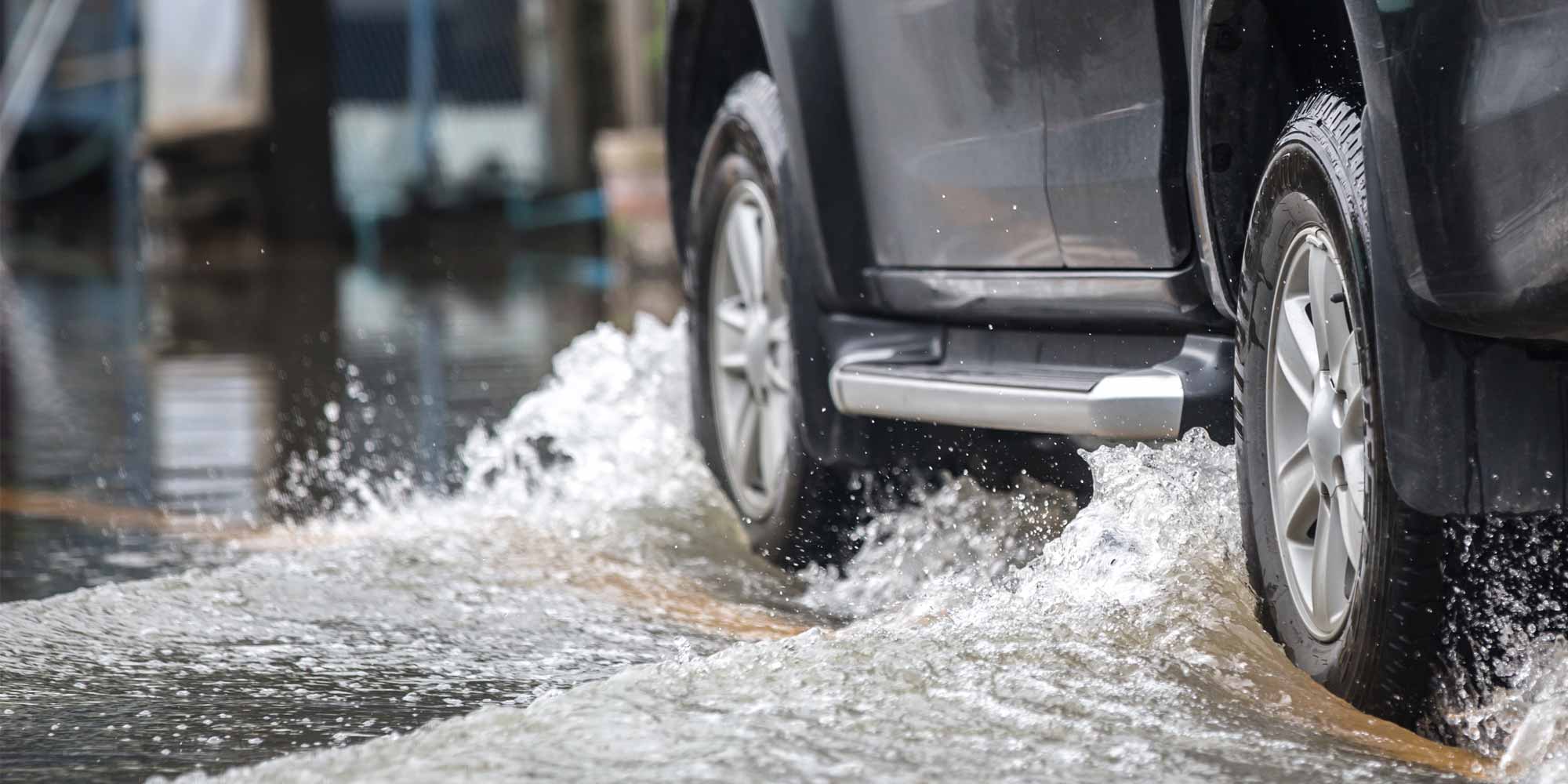Driving through floodwater and heavy rain can feel quite perilous at the best of times, often catching out newer drivers or those who don’t have any experience with driving in adverse conditions.
With our quick and easy guide though, you’ll feel better-equipped to navigate these tricky driving situations.
How to drive in floods and standing water
If you hear there’s flooding on the way, try to move your car to higher ground to stop it from getting damaged. Water plays havoc with vehicle electrics and could cause a number of issues (like your airbag suddenly deploying for no reason). Otherwise, follow our tips below:
- Try to avoid standing water if you can.
- Don’t drive into flood water that’s moving or more than 10cm (4 inches) deep. Let approaching cars pass first.
- Drive slowly and steadily so you don’t make a bow wave.
- Test your brakes as soon as you can afterwards.
- Fast-moving water is very powerful – take care or your car could be swept away.
If you do get stuck in flood water, it’s usually best to wait in the car and call for help rather than try to get out.

